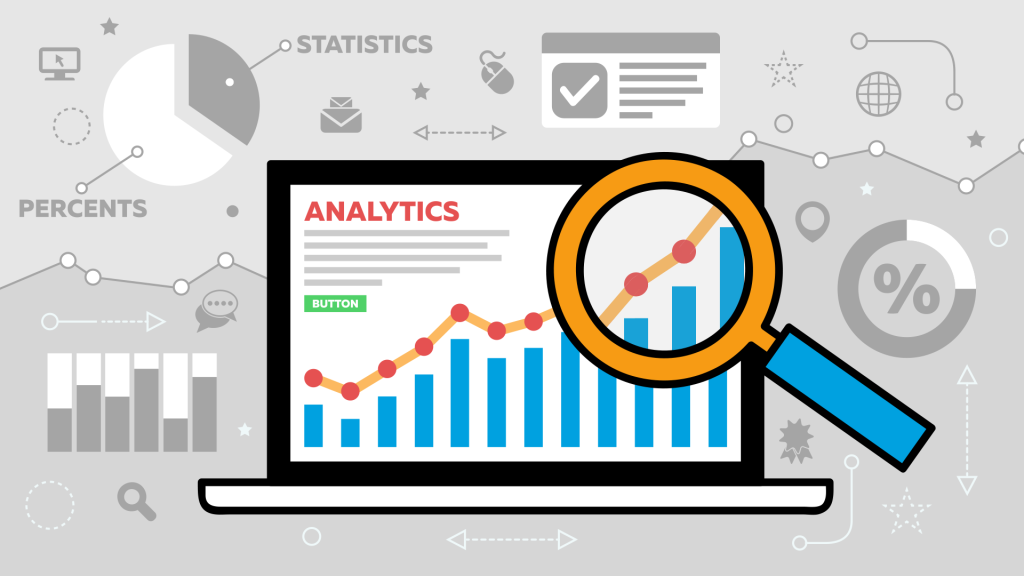
In the competitive world of marketing, understanding and using marketing analytics effectively can make a huge difference for businesses. Let’s explore its methods, how it’s put into practice, and the profits it can bring.
1. Methods of Marketing Analytics
- Data Collection:
- Website Analytics: Tools like Google Analytics are commonly used to gather data on website visitors. We can know how many people visit the site, which pages they view, how long they stay, and where they come from. For example, an e-commerce site can see if customers from a certain region spend more time on product pages.
- Social Media Monitoring: Platforms provide insights on post reach, engagement (likes, comments, shares), and follower demographics. A brand can track which social media posts about its products get the most attention and from which audience segments.
- Customer Surveys: Directly asking customers about their preferences, satisfaction levels, and purchase intentions. For instance, a restaurant can send out surveys to find out what dishes customers like best and what improvements they suggest.
- Data Analysis Techniques:
- Descriptive Analytics: This simply describes what has happened. It involves summarizing data, like calculating the average purchase amount of customers over a period or the percentage of new customers acquired in a month.
- Diagnostic Analytics: Goes deeper to understand why something happened. For example, if sales dropped in a certain month, it can analyze factors like changes in marketing campaigns, competitor actions, or customer feedback to find the root cause.
- Predictive Analytics: Uses historical data to predict future trends or customer behavior. A retailer can predict which products will be popular in the next season based on past sales patterns and current market trends.
2. Practice of Marketing Analytics
- Campaign Evaluation:
- Email Marketing: Analyze open rates, click-through rates, and conversion rates of email campaigns. If an email promoting a new product has a low open rate, we can tweak the subject line or the time of sending to improve it.
- Advertising Campaigns: Track the performance of ads on different platforms like Google Ads or Facebook Ads. See which ads generate the most clicks and conversions, and adjust the targeting, budget, or creative elements accordingly.

- Customer Segmentation:
- Demographic Segmentation: Divide customers by age, gender, location, etc. A beauty brand can target different makeup products to different age groups. Younger customers might prefer trendy and colorful products, while older ones may go for more classic and quality ones.
- Behavioral Segmentation: Group customers based on their purchase behavior, like frequent buyers versus occasional ones. Offer loyalty rewards to frequent buyers to encourage them to keep coming back.
- Psychographic Segmentation: Consider customers’ lifestyles, values, and attitudes. A travel agency can design packages for adventure-seeking customers and relaxing ones separately.
3. Profits from Marketing Analytics
- Increased Sales:
- Personalized Recommendations: By analyzing customer data, recommend products that match their interests. An online bookstore can suggest books similar to what a customer has bought before, increasing the likelihood of additional purchases.
- Optimized Pricing: Determine the best price points for products based on market demand and customer willingness to pay. A hotel can adjust its room rates according to different seasons and customer segments to maximize revenue.
- Cost Reduction:
- Efficient Marketing Spend: Know which marketing channels are most effective and allocate the budget accordingly. Instead of spreading the budget thinly across many channels, focus on the ones that bring the most conversions, reducing wasteful spending.
- Inventory Management: Predict demand accurately through analytics to avoid overstocking or understocking. A clothing retailer can stock the right amount of each size and style, reducing inventory holding costs and lost sales due to out-of-stock items.

In conclusion, marketing analytics is a powerful tool that offers valuable insights through its various methods. When put into practice effectively, it can lead to significant profits by increasing sales and reducing costs. Businesses that embrace and master marketing analytics are more likely to succeed in the highly competitive marketplace.




